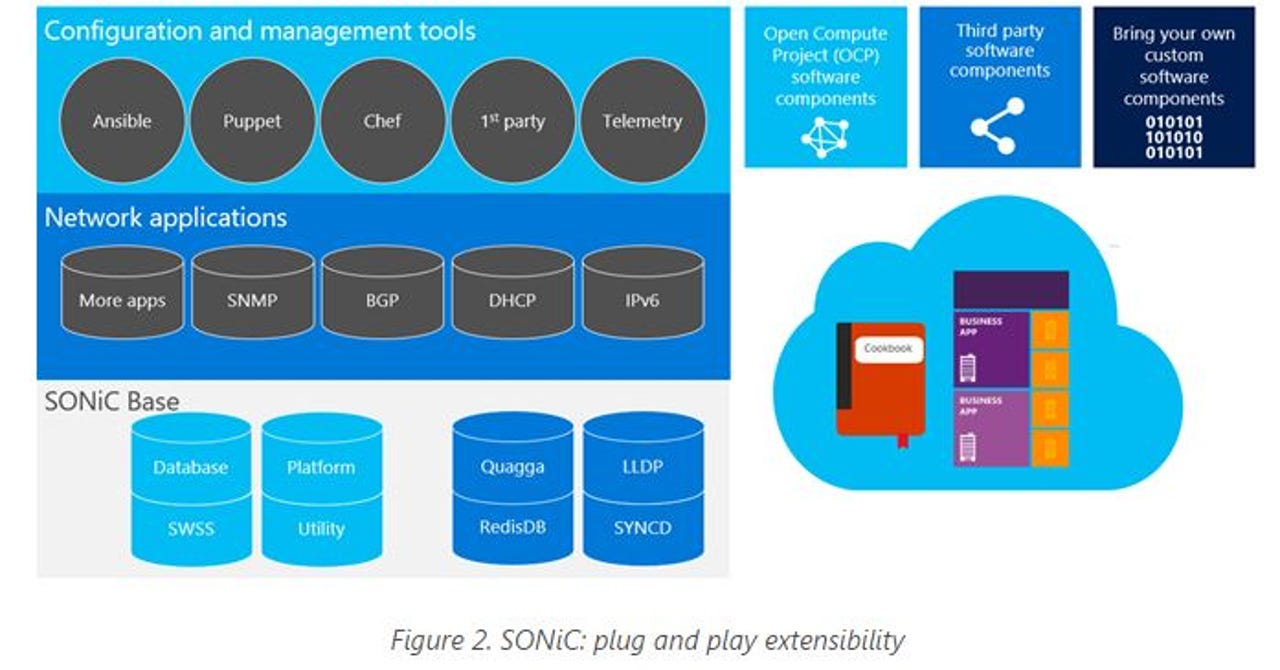Alibaba joins Microsoft's Azure networking switch community

Update (April 5): The original version of this article portrayed Alibaba as using SONIC for its public cloud. Since it was published, Microsoft has come back and said that portrayal is not correct. (I believe translation issues may be, at least in part, to blame for the inaccuracies.) I've updated the first few paragraphs and headline to reflect Microsoft's updates.
Last year, Microsoft contributed its Software for Open Networking in the Cloud (SONIC) to the Open Compute Project datacenter foundation. Almost exactly a year later, Alibaba announced that it is joining the SONIC community and exploring how it may possibly be used internally.

SONIC, formerly known as Azure Cloud Switch, is Linux-based software for controlling networking switches. At the recent Open Networking Summit in Santa Clara, Microsoft officials said that Chinese ecommerce giant Alibaba is the latest to show interest in the technology, according to VentureBeat.
Microsoft uses SONIC in its own Azure datacenters.
To clarify exactly what's happening, a Microsoft spokesperson sent the following statement to me on April 5:
"Alibaba is not adopting SONiC but instead is joining the SONiC community to explore how it might support the development of its internal infrastructure."
Featured
SONIC -- the source code for which Microsoft makes publicly available on GitHub -- is built on Microsoft's open-sourced Switch Abstraction Interface (SAI), which defines a standardized programming interface for network hardware vendors.
In an April 3 blog post, Yousef Khalidi, Microsoft's corporate vice president of Azure Networking, provided some additional context on SONIC,
SONIC is "the first solution to break monolithic switch software into multiple containerized components." This allows operators to plug in new components required for specific scenarios.
SONIC "builds on existing open source technologies such as Docker for containers, Redis for key-value database, protocols like Quagga BGP and LLDPD, and Ansible for deployment. We used the best work in the industry to build SONiC. It evolves quickly because we're building it with existing open source projects. We contributed SONiC back to the community to propel the advance of open networking software in a wonderful, virtuous cycle," explained Khalidi.
(Here's Microsoft's presentation on SONIC at the Open Compute Project Summit.)
Microsoft joined the Open Compute Project (OCP) in 2014, and is a founding member of and contributor to the organization's SAI project. The OCP is a foundation created by Facebook in 2011 that publishes open hardware designs intended to be used to build datacenters relatively cheaply.
When Microsoft joined OCP, company officials said Microsoft would be contributing to the project its Microsoft cloud server specification -- a 12U shared server chassis capable of housing 24 1U servers -- as well as releasing its Chassis Manager under the open-source Apache license.
The OCP has already released specifications for motherboards, chipsets, cabling, common sockets, connectors, and open networking and switches.
Alibaba turns to blockchain tech to fight counterfeit food: